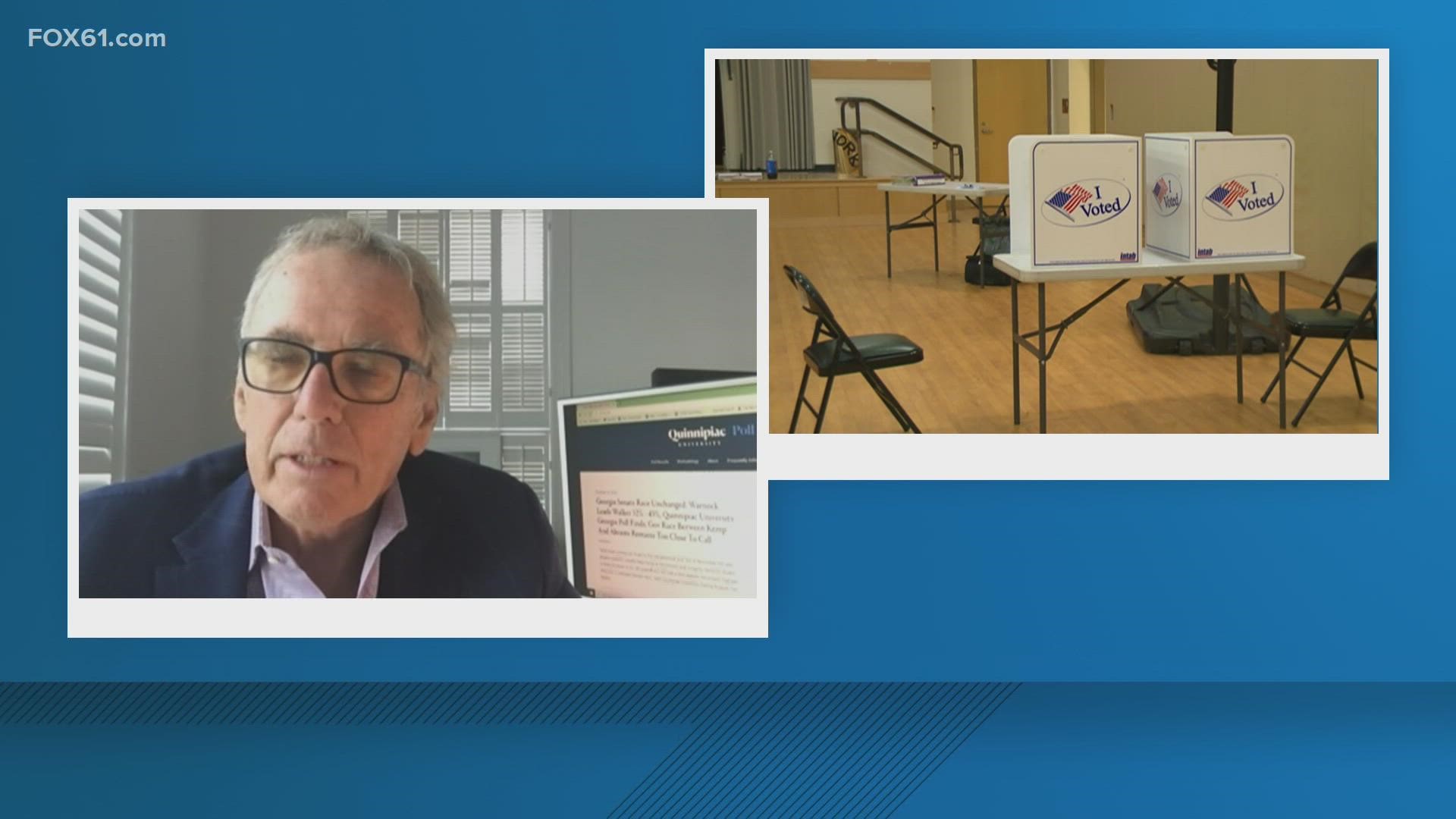HARTFORD, Conn. — Before voters head to the polls, there are lots of political polls getting released especially here in Connecticut where we house the nationally renowned Quinnipiac University poll.
Surveying isn’t an exact science and polls like these can leave you questioning how accurate they are, who took part, and even wondering why they matter.
Tim Malloy, a poll analyst at the Quinnipiac University poll, took the time to give us an inside look at the process.
Many argue polls can’t be representative of all of our state’s population or even the U.S. but a census surveying everyone isn’t always possible. A sample of that population can still give us insight into the overall attitude and trends.
You probably use sampling in your own life, for instance, if you’re trying a new recipe for the first time and you want to know how it tastes a spoonful can give you a good idea. You don’t have to eat the whole plate to know what you think.
In probability-based polling, the most popular and what Quinnipiac University polls are considered, recipients are random and not pre-determined. That means that everyone has a chance of getting that call.
Malloy stressed though that measuring public opinion means taking human nature into account.
“We’re the first ones to say, we’re all human beings. Human beings write the questions, human beings answer the questions… it has to be built in the human factor, you know, not everything is perfect,” he said.
That’s why pollsters tell us it’s important to take a look at the margin of error printed on every results report. The only polls that don’t report a margin of error are ones where the respondents have to ‘opt in’ to answer. So what does that little +/- mean? It tells us how much variability can be expected from the numbers reported and it's an important way the poll centers themselves prioritize transparency.
What else should you keep an eye out for when a new poll comes out?
Methodology: How was it done?
Sample: How many respondents were there?
Subgroups: Who were those respondents?
Sponsor: Who funded the poll/is it partisan or nonpartisan?
Margin of Error: How much variability to expect/the 'human nature' aspect.
Polls aren’t always right and there’s a lot of information to keep track of leaving which is perhaps why many people question their value, but a political poll’s influence, especially during election season, is undeniable for both voters and elected (or hoping to be elected) officials.
For those already in office, a public poll can be a pulse on their constituents' priorities which can then affect their own when it comes to the legislative session.
Candidates hoping to take office watch the polls even closer, often comparing them with their own internal polls. Polling analysts have even called their operations a middleman to conversations between Americans and those running to represent them. Many voters may be curious about how their subgroups' answers can be used in campaign platforms and candidate strategy.
Malloy says subgroups can help us better understand the makeup of the poll, giving us insight into the different kinds of people answering whether that’s a political party, sex of the respondent, age, career or more.
These subgroups are beneficial to candidates’ comprehension of the polls as well. For example, candidates who have lower numbers of projected women voters (also found in polls) might look closer at the Quinnipiac University poll findings and see that abortion and climate change are higher on the list of priorities for likely women voters in Connecticut. Then, you might see them start focusing on those issues more in the coming weeks.
Polls can drum up support for campaigns and have always played a part in shaping political fortunes. They can empower everyday Americans to help influence legislative agendas and action. However, recent national elections have also demonstrated the problems that can occur when we think polls forecast the future instead of simply showing us a snapshot of where people stand at the moment.
Public opinion polls are in the spotlight this midterm election season.
“The midterms are just huge and important, probably a record turnout and there are 7 or 8 states that could tip the Senate one way or the other. This is just a really unique time to be doing this,” says Malloy.
He added that the most important thing to keep in mind is that the polls may be about politics, but the process is more scientific than anything.
“We were taught to hit it down the middle. The last thing we want to do is fabricate something, that’s not the point here. We don’t have political agendas, we don’t talk politics, we just try to hit the ball down the middle.”
---
Have a story idea or something on your mind you want to share? We want to hear from you! Email us at newstips@fox61.com
----
HERE ARE MORE WAYS TO GET FOX61 NEWS
Download the FOX61 News APP
iTunes: Click here to download
Google Play: Click here to download
Stream Live on ROKU: Add the channel from the ROKU store or by searching FOX61.
Steam Live on FIRE TV: Search ‘FOX61’ and click ‘Get’ to download.

